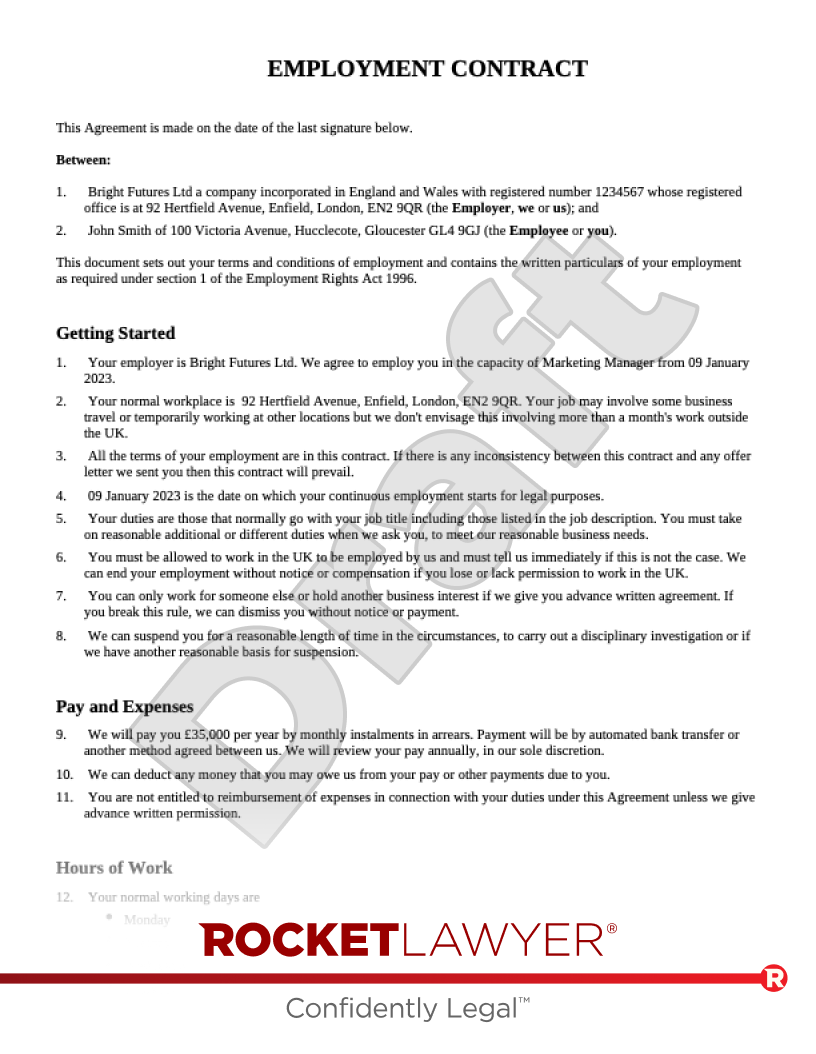1. Periods of continuous employment
A period of continuous employment is used to work out whether employees qualify for certain rights based on length of service. For example, if an employee has been employed for:
-
at least one month – if they are being dismissed by the employer, they are legally entitled to be given a specified amount of notice of their dismissal (ie the statutory minimum notice period)
-
at least 2 years – they are entitled to:
-
a statutory redundancy payment (ie they are provided a monetary package) if they’re made redundant
-
protection against unfair dismissal
-
If an employee has never worked for you or an associated employer before, their period of continuous service will just be the time since they started working for that employer. This could be the date stated in their written employment contract.
However, if the employee has previously undertaken work for an employer or an associated employer, the start of that earlier period of service may be counted as their implied start date if the work is considered to fall under the same employment contract.

Breaks in continuity of employment
Periods of continuous employment are based on continuity of employment. Continuity of employment will be automatically presumed for any employment period, so if an employer wishes to oppose this it will be their responsibility to prove otherwise.
A gap of at least one week (ending on a Saturday) between two employment periods will normally be considered to break continuity, so you can ignore the earlier service when calculating a period of continuous employment unless:
-
an Employment contract exists that allows for breaks of at least one week (eg a zero hours contract)
-
employment was regarded by custom as continuing
-
the break was due to the employee being re-employed following an unfair dismissal
-
the gap was due to a qualifying sickness absence, holiday, family leave (eg maternity, paternity, parental, or adoption leave) or military service
-
temporary cessation of work or strike/lock-out
If successfully proven, calculation of the employee’s continuous employment will start from the Sunday following the last employment gap.
2. Engaging fixed-term employees
Fixed-term contracts can be useful where it is known from the outset that the employment will end after a defined period.
Fixed-term employees are protected by law from being treated less favourably than permanent employees and, if they have enough service, from unfair dismissal.
Fixed-term contracts that are renewed or replaced after four years of qualifying service are automatically converted into contracts of indefinite duration (ie the employee becomes a permanent employee and gains all the rights associated with that status).
For more information on the rights of fixed-term employees and ending fixed-term contracts, read Fixed-term employment contracts.
3. Consultation rights
Consultations are where an employer holds an informative meeting with their employees for an open discussion about organisational issues or changes that might affect them.
Employees have the right to be consulted when certain situations arise, and employers must follow special employee consultation procedures. These are specific requirements relevant to:
-
proposals to dismiss, make redundant, or rehire 20 or more employees in a single establishment (this could mean the entire organisation, or a distinct entity within the organisation which manages its own employees) within 90 days
-
these proposals will require a ‘collective consultation’ (ie with the relevant trade union or employee representatives)
-
-
health and safety arrangements in the workplace
-
proposals to take measures affecting employees in connection with any business transfers
-
requests made in a certain way to set up a body to represent workers
-
proposals to change employment contracts
4. Business sales and transfers
Employees have special protections when the business they work for is sold or transferred. These employee rights are protected under The Transfer of Undertakings (Protection of Employment) Regulations 2006 (‘TUPE'). Types of transfers that these protections apply to include:
-
mergers and acquisitions (ie where one business takeovers another, eg buying a company)
-
insourcing and outsourcing
-
award or transfer of service contracts
-
the transfer of leases
Where employees’ rights are affected by any of these transfers, either the relevant trade union or employee representatives must be consulted and informed about:
-
when the transfer is happening
-
why it is happening
-
anything that may affect the employees
-
any reorganisation which is planned, and
-
how many agency workers they are using, if any, and the type of work they undertake
If there are no employee representatives, from 1 July 2024 onwards, employers can approach their employees directly if they have fewer than 50 employees or they are transferring less than 10 employees.
If employers are not transparent to the relevant representatives regarding their plans, they may face penalties. The transfer recipient will inherit the employees with existing liabilities and existing contracts, unless there have been any changes made during the transfer.
For more information, read Transfer of undertakings.
Further information
Employment law is always changing. Good sources of information about employment law, to help you keep up to date, include:




